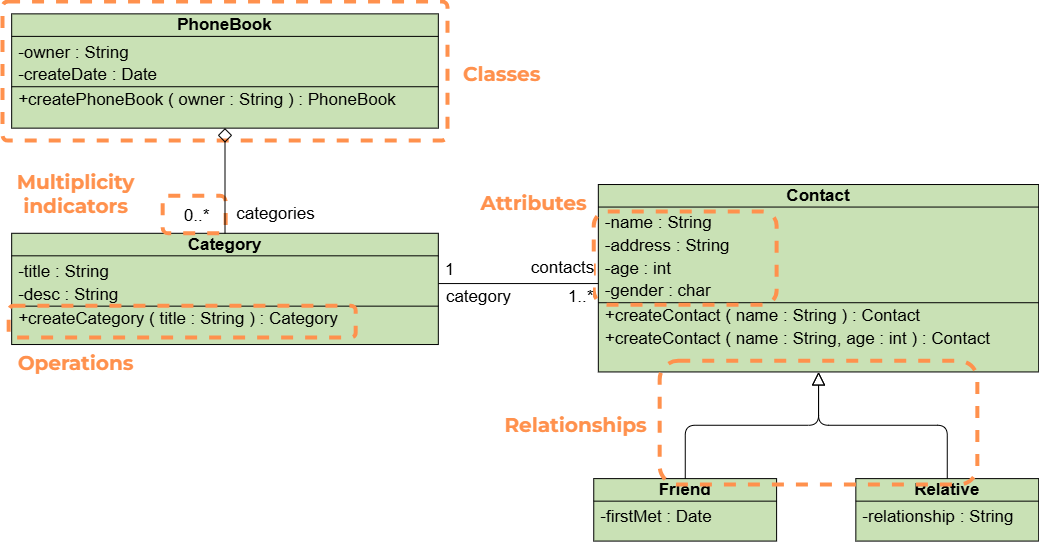Now Reading: The Building Blocks of a Class Diagram: Classes, Attributes, Operations, and Relationships
-
01
The Building Blocks of a Class Diagram: Classes, Attributes, Operations, and Relationships
The Building Blocks of a Class Diagram: Classes, Attributes, Operations, and Relationships
Why Understanding the Basics Matters
A class diagram might look like a simple collection of boxes and lines, but each part has a specific meaning. By understanding its core elements, you can read, create, and refine diagrams with confidence — whether you are designing a small application or modeling a complex enterprise system.

1. Classes – The Core Building Blocks
A class represents a concept, object, or entity in the system. In UML, it is drawn as a rectangle, often split into sections:
- Top section – the class name (e.g., Customer, Order, Product)
- Middle section – attributes (data fields)
- Bottom section – operations (behaviors or functions)
A class represents a concept, object, or entity in the system. In UML, it is drawn as a rectangle, often split into sections:
2. Attributes – The Data Each Class Holds
Attributes are the properties or characteristics of a class. They describe the information each instance of the class will store. Examples include:
- For a Customer class: name, email, phoneNumber
- For a Product class: productName, price, stockQuantity
Attributes help define the identity and state of each object in your system.
3. Operations – The Actions a Class Can Perform
Operations (or methods) define the behaviors of a class — what it can do or how it interacts with other parts of the system. Examples include:
- For a Customer class: placeOrder(), updateProfile()
- For a Product class: adjustStock(), calculateDiscount()
These operations bring your classes to life, turning static data structures into interactive, functional parts of your system.
4. Relationships – How Classes Connect
Relationships show how classes are linked and work together. Common relationship types in class diagrams include:
- Association – A general connection (e.g., a Customer places an Order)
- Aggregation – A “whole-part” relationship where parts can exist independently (e.g., a Team and its Players)
- Composition – A stronger “whole-part” relationship where parts cannot exist without the whole (e.g., a House and its Rooms)
- Inheritance – A hierarchy where a subclass inherits attributes and operations from a superclass
Multiplicity indicators (e.g., 1..*, 0..1) further specify how many instances can be linked in each relationship.
Bringing It All Together
When combined, classes, attributes, operations, and relationships form more than just a diagram, they create a complete structural blueprint of your system. This blueprint becomes a shared reference point for everyone involved in the project, from analysts and designers to developers and testers.
A well-crafted class diagram allows you to:
- Communicate ideas clearly with your team
Visual representations reduce misunderstandings and make complex concepts easier to explain. - Identify missing or redundant components early
Spot gaps in functionality or unnecessary overlaps before they become costly to fix. - Transition smoothly from design to coding
Developers can directly map the diagram’s structure into classes in code, saving time and ensuring consistency. - Support long-term maintenance
Clear documentation helps future teams quickly understand the system’s architecture, even years later.
By bringing these building blocks together, you move from scattered ideas to a unified, organized design that is ready for implementation and growth.
Faster Modeling with AI
Instead of building these components from scratch, you can start with a short problem description and let the Textual Analysis AI Class Diagram Generator automatically identify classes, suggest attributes and operations, and map out relationships. You get a professional UML diagram in minutes, ready for review and editing.

